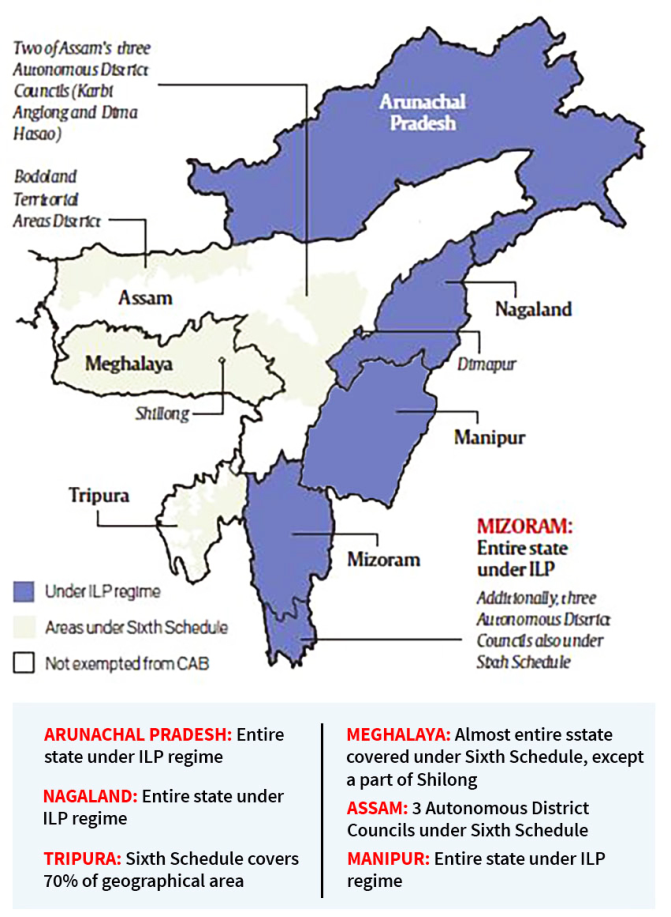Nagaland Implements Inner Line Permit in Three Districts
Why in the news?
Nagaland approved the Inner Line Permit (ILP) for Chumoukedima, Niuland, and Dimapur, classifying Dimapur residents into three categories with exemptions and ILP requirements based on settlement dates.
About the Resident Classification in Dimapur:
- Dimapur residents are classified into three categories for ILP exemption:
- Category-I: Residents settled before December 1, 1963, are exempt from ILP and can receive a Smart Card, Permanent Residence Certificate (PRC), and Domicile Certificate.
- Category-II: Residents settled between December 1, 1963, and November 21, 1979, are exempt from ILP and eligible for PRC and Domicile Certificate.
- Category-III: Residents who settled on or after November 22, 1979, must obtain an ILP.
ILP Validity and Digital System
- Special groups like students, teachers, technical personnel, and business partners will receive ILPs valid for 2 to 5 years based on their purpose of stay.
- Minister Temjen Imna Along announced efforts to strengthen the digital system for ILP issuance to simplify the application process.
What is an Inner Line Permit (ILP)?
- An ILP is a document required by non-natives to visit or stay in states protected under the ILP system.
- Currently, Arunachal Pradesh, Mizoram, Manipur, Nagaland, and Lakshadweep require an ILP.
- The ILP regulates both the duration of stay and accessible areas for non-natives.
- Issued by the state government, it can be applied for online or in person.
- ILPs are only valid for domestic tourists.
Rationale Behind ILP
- Originates from the Bengal Eastern Frontier Regulation Act, 1873.
- Introduced by the British to control indigenous tribes who raided tea plantations and trading posts in Northeast India.
- Recently, ILP was approved for Chumoukedima, Niuland, and Dimapur districts.
- Classification: Dimapur residents will be categorised; Categories I and II are exempt from ILP requirements.




